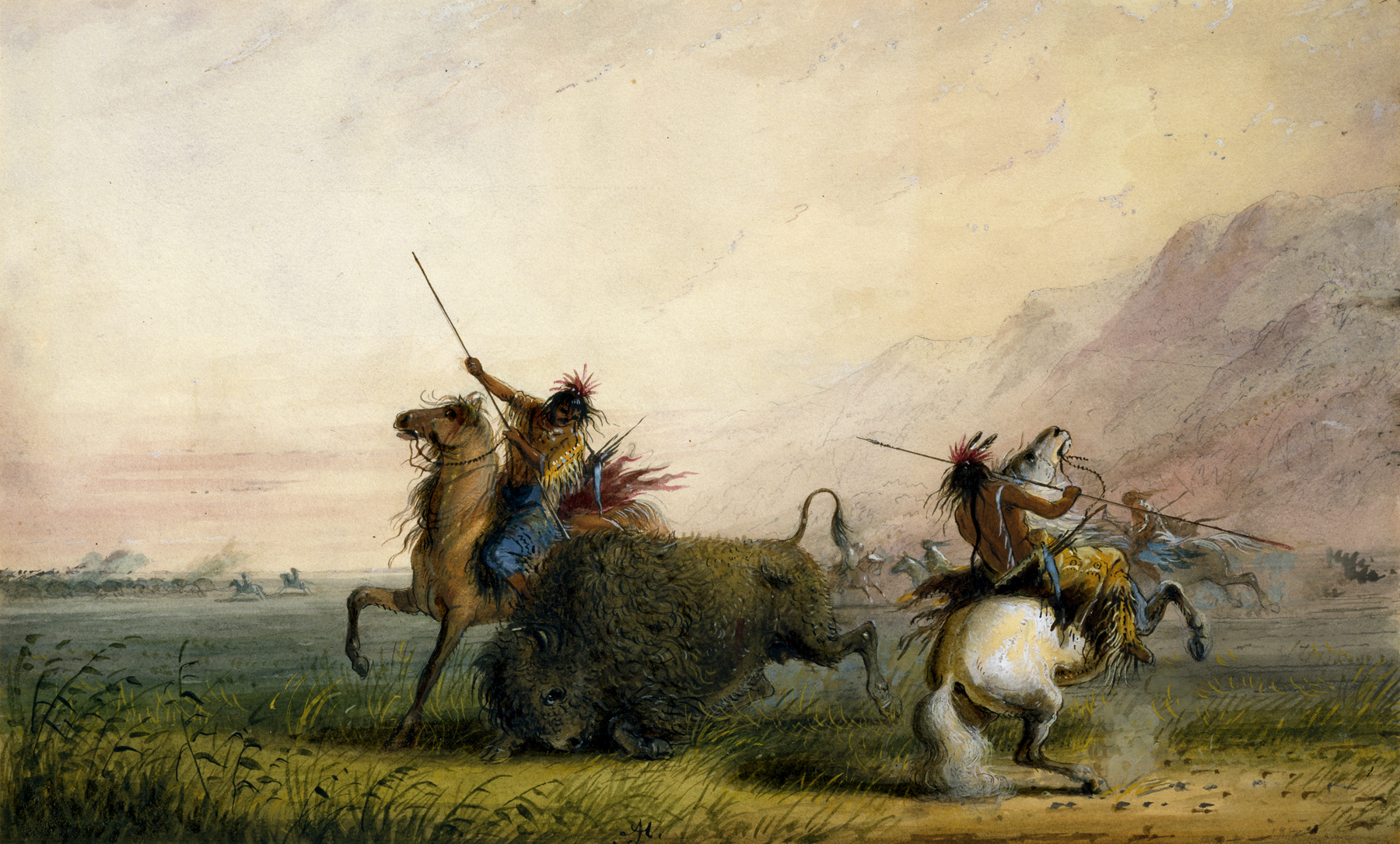Killing Buffalo with the Lance
(18th and 19th Centuries )
Extracts from Alfred Jacob Miller’s original text, which accompanied his images of Native Americans, are included below for reference.
"After a chase the Buffalo has fallen on his knees from exhaustion and loss of blood. The Indian's horse to the right has become restive & refuses to approach, while the horseman to the left, with a javelin or lance is about to give the coup de grace. The lance is from 7 to 10 feet long, neatly pointed with iron, secured by sinew tightly gound to the rod, and is a most effectual weapon in the practiced hands of the Indians;- they carry also their quivers slung from the shoulders in case of breakage of the former, or to be used in an emergancy where the bow and arrow would better answer their purposes. The chase of the Bison is attended with danger, for although in general shy, and flying from the face of man, yet when wounded they become furious, and make fight to the last; They use their hoofs with as much facility as their horns, and whatever opposes them runs no small risk of being trampled to death." A.J. Miller, extracted from "The West of Alfred Jacob Miller" (1837).
In July 1858 William T. Walters commissioned 200 watercolors at twelve dollars apiece from Baltimore born artist Alfred Jacob Miller. These paintings were each accompanied by a descriptive text, and were delivered in installments over the next twenty-one months and ultimately were bound in three albums. Transcriptions of field-sketches drawn during the 1837 expedition that Miller had undertaken to the annual fur-trader's rendezvous in the Green River Valley (in what is now western Wyoming), these watercolors are a unique record of the closing years of the western fur trade.
Inscription
Provenance
Provenance (from the French provenir, 'to come from/forth') is the chronology of the ownership, custody, or location of a historical object. Learn more about provenance at the Walters.
William T. Walters, Baltimore, 1858-1860, by commission; Henry Walters, Baltimore, 1894, by inheritance; Walters Art Museum, 1931, by bequest.
Conservation
| Date | Description | Narrative |
|---|---|---|
| 4/1/1950 | Treatment | cleaned |
Geographies
USA (Place of Origin)
Measurements
H: 8 5/8 x W: 14 3/16 in. (21.9 x 36 cm)
Credit Line
Commissioned by William T. Walters, 1858-1860
Location in Museum
Not on view
Accession Number
In libraries, galleries, museums, and archives, an accession number is a unique identifier assigned to each object in the collection.
In libraries, galleries, museums, and archives, an accession number is a unique identifier assigned to each object in the collection.
37.1940.184



